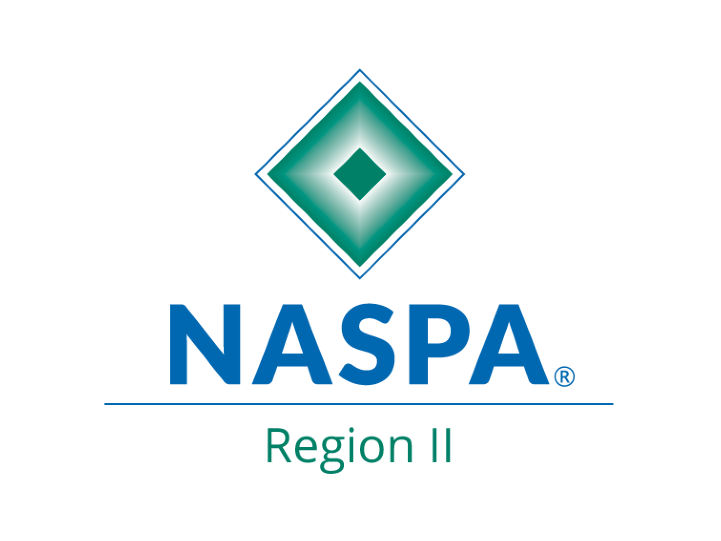
Undocumented Students and Related Policies in Region 2 States
Student Success Policy and Advocacy Equity, Inclusion and Social Justice Regions Region II
Undocumented students rely on higher education and student affairs (HESA) administrators for information regarding tuition and financial aid. Yet, researchers find that HESA administrators often provide inaccurate information or are unaware of federal, state, and local (FSL) policies that affect the higher education of undocumented students (Vega et al, 2022). FSL policies that center undocumented students are often in conflict with each other, adding to issues HESA administrators face when working with undocumented students. This blog will provide an overview for HESA administrators interested in or currently working with undocumented students. This information is not static and should be reviewed annually for any government or administrative changes.
CONTEXT
Currently, 427,000 undocumented students are estimated to live in the United States. Of these students, 181,000 are DACA eligible students. Thirty-four states and DC provide at least limited access to in-state tuition to undocumented students and DACA recipients. Sixteen states and Puerto Rico have either no policies, restrictive policies (policies that actively bar access to in-state tuition or state financial aid) or prohibitive policies (policies that actively bar enrollment in at least some public institutions) for the state’s resident undocumented students. Three states actively bar enrollment in all or certain public institutions for the state’s undocumented students but may still allow DACA recipients to enroll (Alabama, South Carolina, Georgia).
DEFINITIONS
Seven states make up a part of NASPA Region2: New Jersey, New York, Pennsylvania, West Virginia, Maryland, Delaware, and Washington DC.
Four states take on an inclusive approach (New Jersey, New York, Maryland, and Washington DC). States that take an inclusive approach, have opted to provide undocumented students with both the opportunity to enroll in public institutions of higher education (IHEs) and to access in-state tuition benefits and state financial aid.
Two states (Delaware and Pennsylvania) take on a Limited approach which means that they have enacted policies that provide the state’s undocumented students, including DACA recipients, with access to in-state or reduced tuition in at least some public institutions.
One state (West Virginia) offers No State Policy “NSP” regarding undocumented students’ enrollment or access to benefits in public postsecondary education. The table below provides more information regarding NASPA Region 2’s states and its undocumented student population and related policies.
|
NASPA Region2 States |
Population |
Undocumented Immigrants |
DACA recipient |
State Policy Status |
|
New Jersey |
9,261,699 |
471,668 |
38,576 |
Inclusive |
|
Delaware |
1,018,396 |
25,045 |
N/A |
Limited |
|
Maryland |
6,164,660 |
237,845 |
15,485 |
Inclusive |
|
New York |
19,677,151 |
676,105 |
63,216 |
Inclusive |
|
Pennsylvania |
12,972,008 |
163,689 |
15,489 |
Limited |
|
Washington, D.C., |
671,803 |
15,142 |
N/A |
Inclusive |
|
West Virginia |
1,775,156 |
N/A |
N/A |
NSP |
Data from the Higher Education Immigration Portal: https://www.higheredimmigrationportal.org/
DISCUSSION
While four states are demonstrating tuition and financial aid equity toward its undocumented students, my research is suggesting that HESA administrators still have little support to work with their undocumented student population. As such, higher education leaders and supervisors should consider what it means to work within tuition and financial aid equity states. In what ways are higher education leaders taking full advantage of these benefits that undocumented students deserve in their states? How are higher education leaders providing adequate training to their HESA administrators to ensure that undocumented students are being properly served?
Two states are demonstrating limited support to undocumented students. In Pennsylvania, only the Pennsylvania State University extends in-state tuition benefits to undocumented students and in Delaware only University of Delaware and Delaware Technical Community College extend in-state tuition benefits to undocumented students. What lessons can we learn from these states to encourage other public institutions to implement similar policies? What are private institutions within those states doing to support their undocumented student population.
West Virginia provides no guidance for their HESA administrators to encourage access and enrollment by undocumented students in their state. How can NASPA encourage HESA professionals to adequately serve their undocumented student population?
CONCLUSION
Higher education leaders should explore who among their staff have the knowledge, skills, and dispositions to work with undocumented students and learn from these HESA professionals. A campus that is silently supportive of undocumented students may be causing stress to HESA professionals who work with undocumented students. HESA Professionals should be provided with training. NASPA and its regions should provide more training and share knowledge not just to support undocumented students but to assist their HESA administrators with appropriate information so that they may properly serve undocumented students.
(Funding for this work has been provided by the Spencer Foundation)